-
Home
-
Contributors
-
International
-
Account
-
Information
More From Contributor
Intel Core I3-9100F Processor 3.6 GHz Box 6 MB Smart Cache
increased energy efficiency when you don&153;t.\n\nIntel&174; Virtualization Technology (VT-x)\n\nIntel&174; Virtualization Technology (VT-x) allows one hardware platform to function as multiple &156;virtual&157; platforms. It offers improved manageability by limiting downtime and maintaining productivity by isolating computing activities into separate partitions.\n\nIntel&174; Virtualization Technology for Directed I/O (VT-d)\n\nIntel&174; Virtualization Technology for Directed I/O (VT-d) continues from the existing support for IA-32 (VT-x) and Itanium&174; processor (VT-i) virtualization adding new support for I/O-device virtualization. Intel VT-d can help end users improve security and reliability of the systems and also improve performance of I/O devices in virtualized
environments.\n\nIntel&174; VT-x with Extended Page Tables (EPT)\n\nIntel&174; VT-x with Extended Page Tables (EPT), also known as Second Level Address Translation (SLAT), provides acceleration for memory intensive virtualized applications. Extended Page Tables in Intel&174; Virtualization Technology platforms reduces the memory and power overhead costs and increases battery life through hardware optimization of page table management.\n\nIntel&174; 64\n\nIntel&174; 64 architecture delivers 64-bit computing on server, workstation, desktop and mobile platforms when combined with supporting software.&185; Intel 64 architecture improves performance by allowing systems to address more than 4 GB of both virtual and physical memory.\n\nInstruction Set\n\nAn instruction set refers to the basic
set of commands and instructions that a microprocessor understands and can carry out. The value shown represents which Intel&153;s instruction set this processor is compatible with.\n\nInstruction Set Extensions\n\nInstruction Set Extensions are additional instructions which can increase performance when the same operations are performed on multiple data objects. These can include SSE (Streaming SIMD Extensions) and AVX (Advanced Vector Extensions).\n\nIdle States\n\nIdle States (C-states) are used to save power when the processor is idle. C0 is the operational state, meaning that the CPU is doing useful work. C1 is the first idle state, C2 the second, and so on, where more power saving actions are taken for numerically higher C-states.\n\nEnhanced Intel SpeedStep&174;
Technology\n\nEnhanced Intel SpeedStep&174; Technology is an advanced means of enabling high performance while meeting the power-conservation needs of mobile systems. Conventional Intel SpeedStep&174; Technology switches both voltage and frequency in tandem between high and low levels in response to processor load. Enhanced Intel SpeedStep&174; Technology builds upon that architecture using design strategies such as Separation between Voltage and Frequency Changes, and Clock Partitioning and Recovery.\n\nThermal Monitoring Technologies\n\nThermal Monitoring Technologies protect the processor package and the system from thermal failure through several thermal management features. An on-die Digital Thermal Sensor (DTS) detects the core's temperature, and the thermal management features
reduce package power consumption and thereby temperature when required in order to remain within normal operating limits.\n\nIntel&174; Identity Protection Technology\n\nIntel&174; Identity Protection Technology is a built-in security token technology that helps provide a simple, tamper-resistant method for protecting access to your online customer and business data from threats and fraud. Intel&174; IPT provides a hardware-based proof of a unique user&153;s PC to websites, financial institutions, and network services; providing verification that it is not malware attempting to login. Intel&174; IPT can be a key component in two-factor authentication solutions to protect your information at websites and business log-ins.FeatureFeature ValueProcessor family9th gen Intel&174;
Core&132;&162; i3Processor frequency3.6 GHzProcessor cores4Processor socketLGA 1151 (Socket H4)Component forPCProcessor lithography14 nmBoxYCooler includedYProcessor modeli3-9100FProcessor threads4System bus rate8 GT/sProcessor operating modes64-bitProcessor cache6 MBProcessor cache typeSmart CacheProcessor boost frequency4.2 GHzMemory bandwidth supported by processor (max)37.5 GB/sProcessor ARK ID190886Memory channelsDualMaximum internal memory supported by processor64 GBMemory types supported by processorDDR4-SDRAMMemory clock speeds supported by processor2400 MHzECCYOn-board graphics adapterNDiscrete graphics adapterNOn-board graphics adapter modelNot availableDiscrete graphics adapter modelNot availableThermal Design Power (TDP)65 WExecute Disable BitYIdle StatesYThermal Monitoring
TechnologiesYMaximum number of PCI Express lanes16PCI Express slots version3.0PCI Express configurations1x8+2x4, 1x16, 2x8Supported instruction setsAVX 2.0, SSE4.1, SSE4.2Scalability1SCPU configuration (max)1Embedded options availableNThermal solution specificationPCG 2015CPCI Express CEM revision3.0Harmonized System (HS) code8542310001Intel&174; Hyper Threading Technology (Intel&174; HT Technology)NIntel&174; Identity Protection Technology (Intel&174; IPT)YIntel&174; Turbo Boost Technology2.0Intel&174; vPro&132;&162; TechnologyNIntel&174; AES New Instructions (Intel&174; AES-NI)YEnhanced Intel SpeedStep TechnologyYIntel Trusted Execution TechnologyNIntel&174; Memory Protection Extensions (Intel&174; MPX)YIntel VT-x with Extended Page Tables (EPT)YIntel&174; Secure KeyYIntel TSX-NINIntel
Stable Image Platform Program (SIPP)NIntel&174; OS GuardYIntel Software Guard Extensions (Intel SGX)YIntel 64YIntel Virtualization Technology (VT-x)YIntel Virtualization Technology for Directed I/O (VT-d)YIntel&174; Optane&132;&162; Memory ReadyYIntel&174; Boot GuardYTjunction100 &176;CProduct typeProcessorProcessor package size37.5 x 37.5 mmGeneration9th GenerationIntel&174; vPro&132;&162; Platform EligibilityNLaunch dateQ2'19StatusLaunchedMaximum memory64 GBBus speed8 GT/s
- External links may include paid for promotion
- Availability: In Stock
- Supplier: Transparent Communications
- SKU: 4589378
Product Description
Intel&174; Optane&132;&162; Memory Supported\n\n Intel&174; Optane&132;&162; memory is a revolutionary new class of non-volatile memory that sits in between system memory & storage to accelerate system performance & responsiveness. When combined with the Intel&174; Rapid Storage Technology Driver, it seamlessly manages multiple tiers of storage while presenting one virtual drive to the OS, ensuring that data frequently used resides on the fastest tier of storage. Intel&174; Optane&132;&162; memory requires specific hardware & software configuration.\n\n Intel&174; Turbo Boost Technology\n\n Intel&174; Turbo Boost Technology dynamically increases the processor's frequency as needed by taking advantage of thermal & power headroom to give you a burst of speed when you need it, & increased energy efficiency when you don&153;t.\n\n Intel&174; Virtualization Technology (VT-x)\n\n Intel&174; Virtualization Technology (VT-x) allows one hardware platform to function as multiple &156;virtual&157; platforms. It offers enhanced manageability by limiting downtime & maintaining productivity by isolating computing activities into separate partitions.\n\n Intel&174; Virtualization Technology for Directed I/O (VT-d)\n\n Intel&174; Virtualization Technology for Directed I/O (VT-d) continues from the existing support for IA-32 (VT-x) & Itanium&174; processor (VT-i) virtualization adding new support for I/O-device virtualization. Intel VT-d can help end users improve security & reliability of the systems & also improve performance of I/O devices in virtualized environments.\n\n Intel&174; VT-x with Extended Page Tables (EPT)\n\n Intel&174; VT-x with Extended Page Tables (EPT), also known as Second Level Address Translation (SLAT), provides acceleration for memory intensive virtualized applications. Extended Page Tables in Intel&174; Virtualization Technology platforms reduces the memory & power overhead costs & increases battery life through hardware optimization of page table management.\n\n Intel&174; 64\n\n Intel&174; 64 architecture delivers 64-bit computing on server, workstation, desktop & mobile platforms when combined with supporting software.&185; Intel 64 architecture improves performance by allowing systems to address more than 4 GB of both virtual & physical memory.\n\n Instruction Set\n\n An instruction set refers to the basic set of commands & instructions that a microprocessor understands & can carry out. The value shown represents which Intel&153;s instruction set this processor is compatible with.\n\n Instruction Set Extensions\n\n Instruction Set Extensions are additional instructions which can increase performance when the same operations are performed on multiple data objects. These can include SSE (Streaming SIMD Extensions) & AVX (Advanced Vector Extensions).\n\n Idle States\n\n Idle States (C-states) are used to save power when the processor is idle. C0 is the operational state, meaning that the CPU is doing useful work. C1 is the first idle state, C2 the second, & so on, where more power saving actions are taken for numerically higher C-states.\n\n Enhanced Intel Speed Step&174; Technology\n\n Enhanced Intel Speed Step&174; Technology is an advanced means of enabling high performance while meeting the power-conservation needs of mobile systems. Conventional Intel Speed Step&174; Technology switches both voltage & frequency in tandem between high & low levels in response to processor load. Enhanced Intel Speed Step&174; Technology builds upon that architecture using design strategies such as Separation between Voltage & Frequency Changes, & Clock Partitioning & Recovery.\n\n Thermal Monitoring Technologies\n\n Thermal Monitoring Technologies protect the processor package & the system from thermal failure through several thermal management features. An on-die Digital Thermal Sensor (DTS) detects the core's temperature, & the thermal management features reduce package power consumption & thereby temperature when required in order to remain within normal operating limits.\n\n Intel&174; Identity Protection Technology\n\n Intel&174; Identity Protection Technology is a built-in security token technology that helps provide a simple, tamper-resistant method for protecting access to your online customer & business data from threats & fraud. Intel&174; IPT provides a hardware-based proof of a unique user&153;s PC to websites, financial institutions, & network services; providing verification that it is not malware attempting to login. Intel&174; IPT can be a key component in two-factor authentication solutions to protect your information at websites & business log-ins. Feature Feature Value Processor family 9th gen Intel&174; Core&132;&162; i 3 Processor frequency 3.6 GHz Processor cores 4 Processor socket LGA 1151 (Socket H4) Component for PCProcessor lithography 14 nm Box Y Cooler included Y Processor modeli 3-9100 F Processor threads 4 System bus rate 8 GT/s Processor operating modes 64-bit Processor cache 6 MBProcessor cache type Smart Cache Processor boost frequency 4.2 GHz Memory bandwidth supported by processor (max)37.5 GB/s Processor ARK ID190886 Memory channels Dual Maximum internal memory supported by processor 64 GBMemory types supported by processor DDR4-SDRAMMemory clock speeds supported by processor 2400 MHz ECCYOn-board graphics adapter N Discrete graphics adapter N On-board graphics adapter model Not available Discrete graphics adapter model Not available Thermal Design Power (TDP)65 WExecute Disable Bit Y Idle States Y Thermal Monitoring Technologies Y Maximum number of PCI Express lanes 16PCI Express slots version 3.0PCI Express configurations 1x 8+2x 4, 1x 16, 2x 8 Supported instruction sets AVX 2.0, SSE4.1, SSE4.2 Scalability 1SCPU configuration (max)1 Embedded options available N Thermal solution specification PCG 2015CPCI Express CEM revision 3.0 Harmonized System (HS) code 8542310001 Intel&174; Hyper Threading Technology (Intel&174; HT Technology)NIntel&174; Identity Protection Technology (Intel&174; IPT)YIntel&174; Turbo Boost Technology 2.0 Intel&174; v Pro&132;&162; Technology N Intel&174; AES New Instructions (Intel&174; AES-NI)YEnhanced Intel Speed Step Technology Y Intel Trusted Execution Technology N Intel&174; Memory Protection Extensions (Intel&174; MPX)YIntel VT-x with Extended Page Tables (EPT)YIntel&174; Secure Key Y Intel TSX-NINIntel Stable Image Platform Program (SIPP)NIntel&174; OS Guard Y Intel Software Guard Extensions (Intel SGX)YIntel 64 Y Intel Virtualization Technology (VT-x)YIntel Virtualization Technology for Directed I/O (VT-d)YIntel&174; Optane&132;&162; Memory Ready Y Intel&174; Boot Guard Y Tjunction 100 &176;CProduct type Processor Processor package size 37.5 x 37.5 mm Generation 9th Generation Intel&174; v Pro&132;&162; Platform Eligibility N Launch date Q2'19 Status Launched Maximum memory 64 GBBus speed 8 GT/s
Reviews/Comments
Add New
Intelligent Comparison
Price History
We couldn't find any historical pricing!
Vouchers
Do you know a voucher code for this product or supplier? Add it to Insights for others to use.


 United Kingdom
United Kingdom
 France
France
 Germany
Germany
 Netherlands
Netherlands
 Sweden
Sweden
 USA
USA
 Italy
Italy
 Spain
Spain





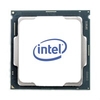
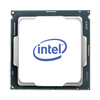

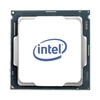











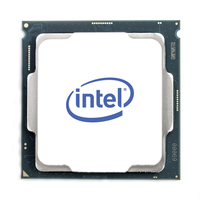
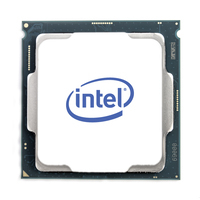
 Denmark
Denmark